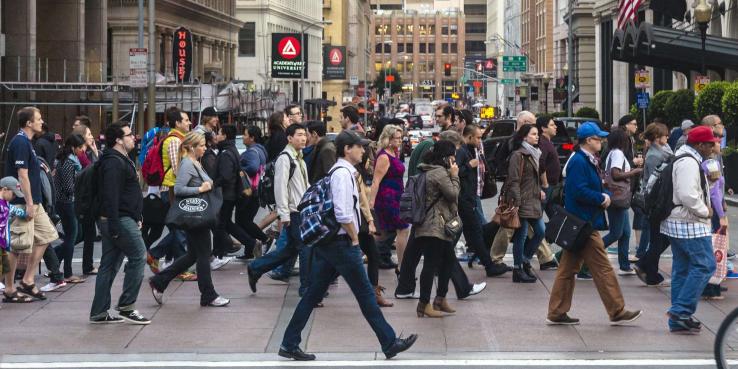In a little under a year, government agencies, local community groups, volunteers and — hopefully — every resident in the United States will work together to do something foundational to our democracy: tally every person as part of the once-a-decade census. Counting everyone once, and in the place where they live, is a profound expression of who our nation is and who deserves to be included in our political systems and public services. Throughout 2019, SPUR is hosting a series of events on local strategies to make sure everyone in the Bay Area gets counted — including how communities could navigate the citizenship question, which seems a likely addition to the census given the Supreme Court’s initial take on the issue.
The census as a tool for our democracy dates back to the Constitution, where it’s mandated to determine representation in Congress (Article 1, Section 2 and Fourteenth Amendment Section 2). Since the very first census in 1790, its importance has only grown. It is now also used for drawing the boundaries for state representation and school districts and by educational institutions, businesses and nonprofits to understand how populations and demand for services are changing.
It is also fundamental to a vast array of public services. In 2015, census information underpinned 132 federal programs that distributed $675 billion in benefits across the United States. These programs include food assistance for families and school children, unemployment insurance, head start educational programs, housing vouchers, crime victim assistance, grants for transit infrastructure, wildfire protection, emergency disaster relief and much more.
The success of the 2020 census means fully counting historically undercounted populations, such as African Americans, and hard-to-count populations such as young children, renters, immigrants, those experiencing homelessness and those with limited English proficiency.
What’s the cost of not counting everyone? Well, in the 1990 census, California was undercounted by roughly 2.4% or 835,000 people. It’s estimated that this undercount cost the state one seat in the U.S. House of Representatives and about $200 million in federal funding.
Despite its importance, less than a third of U.S. residents are familiar with the census. Ongoing national trends also show declining response rates to census questionnaires, increasing distrust of government and public institutions, and people moving more often and living in complex living arrangements, which makes them difficult to reach. In 2020, a complete count will be more of a potential challenge for two additional reasons.
First, the potential inclusion of a citizenship question on the 2020 census has fueled fear and distrust among immigrant communities, leading to lawsuits by cities and states. The federal administration argued that it wanted to include a citizenship question in order to better enforce the Voting Rights Act of 1965, but this data is not needed to enforce it. And many have argued that including a citizenship question will discourage legal immigrants and communities of color from filling out the census forms, which will in turn limit their political representation and public service funding for at least a decade. This was one of the reasons for taking it off the census in the 1950s. When you think about the programs that are determined by census counts, a decade starts to look like a very long time. It’s nearly all the years a hungry child may receive free or reduced school lunches, for example. A complete count in 2020 could be the difference between some people getting services during their lifetimes — or not.
In addition, this will be the first 10-year census in which respondents can fill out the questionnaire they get in the mail by going online and the first in which field workers can record responses on phones and tablets. While the U.S. Census Bureau did test runs with the new digital format, 2020 will be the first time it is deployed at scale. Some are concerned that while this format will save costs, it leaves the U.S. vulnerable to cyber-attacks and online campaigns to discredit the census. If realized, such efforts could undermine a complete count.
The good news is the state is also investing a great deal in this census — over $150 million in coordinated statewide educational campaigns and for on-the-ground outreach, technical and legal assistance and more led by counties, tribal governments and community-based organizations. The on-the-ground efforts are being coordinated by officials in each California county and are referred to as local complete-count strategies.
SPUR understands the importance of such local leadership. That’s why we’re hosting events in the Bay Area’s biggest cities to showcase and solicit feedback on the local complete-count strategies underway. Our first public event on the 2020 Census will be at our downtown Oakland location on May 15 and is co-sponsored by New America CA. We’ll have a similar event this summer in San Francisco, and another this fall in San Jose. We hope you’ll join these events and help make sure that, both today and in 2020, everyone counts.
